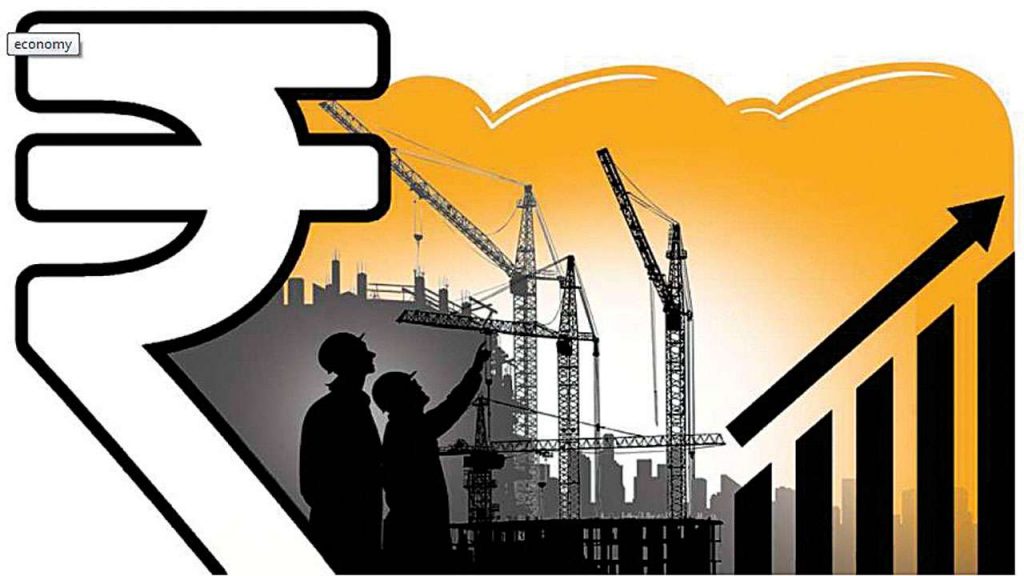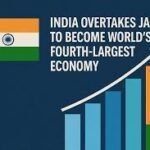With the advent of liberalization, privatization and globalization policies in 1991, the doors for revolutionized economy widened. Liberalization of services in India involved key institutional and structural reforms that included telecommunications, net banking, online trading etc. this lead of inflow of technology,FDIs, FIIs which promised as an impetus to growth. E-Commerce can be understood as a blend of two forms- E finance and E merchandise. It implies the trading of goods and services online using the internet technology that eases the consumer and avoids the hassle and discomfort as provides goods and services at cheaper rates with better variety and options and has proven to be a boon for consumer base in India. The rise in sales of smartphones, internet networks is directly proportional to the rise in e-commerce services as they are complimentary.
Though E-Commerce has been a great platform to stimulate employment, encourage startups and provides internships to the rich demographic dividend of the country in turn raising economic growth and socio-economic growth but its effects have been manifold. The growth pattern of the penetration of e-commerce in the country has been:Internet penetration projected to increase from current 32% in 2015 to 59% in 2020² • Online shoppers (as a % of internet users) to grow from 12% in 2015 to 40% in 2020².
Types of e-commerce
- B2B (Business to Business) the largest form of Ecommerce. This model defines that buyer and seller are two different entities (Malik, 2010). It is similar to manufacturer issuing goods to the retailer or wholesaler.(Monga,2012)
- B2C business to consumer refers to communicating with selling to an individual rather than a company, online shopping can be faster and more convenient. The offerings and prices can change instantaneously( Monga,2012)
- B2E (Business to employee) refers to the requisitioning of supplies by employees for use in jobs, but this really has grown to encompass much more. B2E has grown into technologies that allow the employees to access their employee records to update address information.(Monga,2012)
- C2B (Consumer to Business) A consumer saves his project with budget online and companies review it according to the requirement and bid on the project.
- C2C (Consumer to Consumer) it helps the online dealing of goods or services among people.
Indian e-commerce industry has been an upward growth trajectory and is expected to surpass U.S to become largest e E-commerce market in the world by 2034. India is at cusp of digital revolution.” Internet has become important part of major population mainly because: – 1- Decrease in the subsequent price of broadband subscription price. 2- Change in urban India’s changing lifestyle 3- Increase in netizens 4- Convenience of online shopping (Kapoor 2018).
There have been several government initiatives to boost the Indian economy since 2014 such as make in India, digital India, startup India, skill India and innovation fund. There has been huge policy support to stimulate growth as 100% FDI share is allowed in the b2b system , also under automatic route is permitted in marketplace model of e-commerce. This has been done to increase foreign player’s participation and allow foreign exchange and inflows to the developing economy of India.

Some of the major developments in the e-commerce sector can be viewed as ordering objects like mobile phones to vegetables using online websites and applications.
- Flipkart, after getting acquired by Walmart for US$ 16 billion, is expected to launch more offline retail stores in India to promote private labels in segments such as fashion and electronics. In September 2018, Flipkart acquired Israel based analytics start-up Upstream Commerce that will help the firm to price and position its products in an efficient way, this will enhance online shopping consumer behavior and has helped combatting the competition.
- Paytm has launched its bank – Paytm Payment Bank. Paytm bank is India’s first bank with zero charges on online transactions, no minimum balance requirement and free virtual debit card also the movement of going cashless has made Paytm one of the largest sources of online payment, others include google pay, amazon pay etc.
- As of June 2018, Google planned to enter into the E-commerce space by November 2018. India was expected to be its first market and has a large consumer base.
- E-commerce industry in India witnessed 21 private equity and venture capital deals worth US$ 2.1 billion in 2017 and 40 deals worth US$ 1,129 million in the first half of 2018 which promises better prospects in future.
- Google and Tata Trust have collaborated for the project ‘Internet Saathi’ to foster internet penetration among rural women in India to propagate technological advances.
The e-commerce industry has been directly impacting the micro, small & medium enterprises (MSME) in India by providing means of financing, technology and training as it involves establishment of the manufacturing base in the domestic market, and has huge impact on exports. India has been an import dependent country at a point and huge foreign exchange deficits. And has a favourable cascading effect on other industries as well. The Indian e-commerce industry has been on an upward growth trajectory and is expected to surpass the US to become the second largest e-commerce market in the world by 2034. Technology enabled innovations which have been a blessing of inflowing foreign direct investments which brings capital and technological inflow in the country like digital payments, hyper-local logistics, analytics driven customer engagement and digital advertisements will likely support the growth in the sector. The growth in e-commerce sector will also boost employment, increase revenues from export and provisions of business, increase tax collection by ex-chequers, and provide better products and services to customers in the long-term.
Increased e-commerce leads to tight and a form of perfect competition in the market, which leads to slow pace in price fluctuations or no change in price to maintain the consumer base in the market. This leads to less influences in the overall price level of the economy and as a result lower inflation. The effects of low inflation have an adverse effect on the production sector of the economy. The profit is minimal as a result economy finds itself difficult to operate on the full maximizing ppc level and increased production is usually not favorable.
As substantiated by Phillips curve that inflation and unemployment have an inverse relationship. Higher inflation is associated with lower unemployment and vice versa. This implies that a reversal consequence of inflation, as inflation rates are low so as a result employment opportunities are low, thus high unemployment, which remains stable. This reflects that though e-commerce has given a boost to service sector and employed people, its long term effects remain more at the low employment sides.
If any fiscal stimulus triggers the aggregate demand in the economy, it will lead to rise in production consequently labor demand increases thus rise in employment which also includes companies raising wages to attract the small talent pool to be successful in the competitive market. Theincreased corporate cost is later passed on to the consumers as high price which implies high average price level in the economy that is high inflation.
E-commerce has mixed effects on the traditional markets. It has helped retailers save cost of employing staff; managers etc. and expand the consumer base by attracting more potential customers by providing them a comfort of receiving items of their utility at their doorsteps. This has effects on the economic prosperity of retail sector. But some people have been subject to cybercrimes and online frauds which make them rely on the traditional markets only.It is very convenient for elderly, disabled and those who have less access to nearby markets.
Another angle to view it as focuses on the fact that ease to shop even groceries online have made the markets and livelihood of street vendors miserable. Those who have ease to book cabs via uber or ola avoid taking autos and rickshaws which has substantial effects on the low economic class. Due to online apps such as urban clap, basic services of utility which were traditionally offered by maids, servants, freelancers are now offered by the online service.
The impact on international trade is positive as it provides impetus to import more from India to high economic growth countries and in turn provides knowledge spillovers, technology, attracts FDIs and foreign inflows in the country. The advantages are likely to benefit developed countries in short run and developing in the long run too.
The growth pattern observed in b2b e-commerce services has affected costs and profit figures for companies overall. At microeconomic level, it has effected supply chain patterns and improved management and transaction costs and reduced cost of domestic and global sourcing. Internet and online working has eased the system and incurred cost up to a level. Macroeconomic level includes downward direction and push to inflation levels in the country , increased competition which implies more players entering in the market, production levels will rise and so does ways to have high flexible profit margins.
e-commerce has become the fastest growing trade sector and has surpassed the growth of every manufacturing and trade sector, but the long term effects seem to be mixed certain trade services online have replaced the physical employment. ex- human teachers are being replaced with online study applications crafted to provide educational services to students such as Byjus andtoppers, even the coaching centers which has been huge source of income generations for professors and also employs teachers are replaced with applications like unacademy. Though these companies have employed large amount of people but has replaced traditional sources of jobs.
E-commerce has been the reason of changes in the consumer’s way of online shopping and how retailers adjust their marketing accordingly. Such as traffic comparison shopping engines is on the rise. On a higher level, consumers are looking across multiple websites to find the best deal. This puts an extra strain on online business owners to instantly entice shoppers to stay put. In other words, the sales pitch has shortened to immediacy, requiring merchants to offer big, shiny deals right off the bat(winn 2012). There have been considerable shifts in the nature of products being purchased online, from electronics to even a pin. For costlier items, the research is done offline, such as diamonds by visiting jewelry showrooms and inquiring about the costs then purchasing them online. And because of this pattern of behavior, and government’s need of revenue collection to keep fiscal deficits in control, internet sales tax is also levied.
Discount dependency is so high in online marketing that the consumers have become habitual to the coupons, free shipping, “maha and festive sales” featuring on amazon, myntra etc. people compare the prices in stores and online and have become smarter consumers, reminding us of more of a perfect competition where consumers have full knowledge about the products.
As per economic theory of decreasing returns to scale, which implies that at a certain point of time production will fall down and profitability won’t continue to increase. This is defied in e-commerce as they are able to maintain growth with increasing returns to scale. That is how they differ from manufacturing units. The importance of physical assets and investments no longer holds central position in e-commerce. The investment includes technology, IT skills and R &D. this throws light on the use of intangible assets in running the e-commerce machines.
The essence of e-commerce inclines its best fruits towards consumer side more, as every consumer aims at reaching the point of satiety; utility fulfillment is aimed at the lowest price. Better choices and quality. This keeps the industry going. It provides a shell against the economic forces and climates operating in the economy.
To conclude, I would like to emphasize the duality of penetration of e-commerce in the economy with both positives and negatives.









